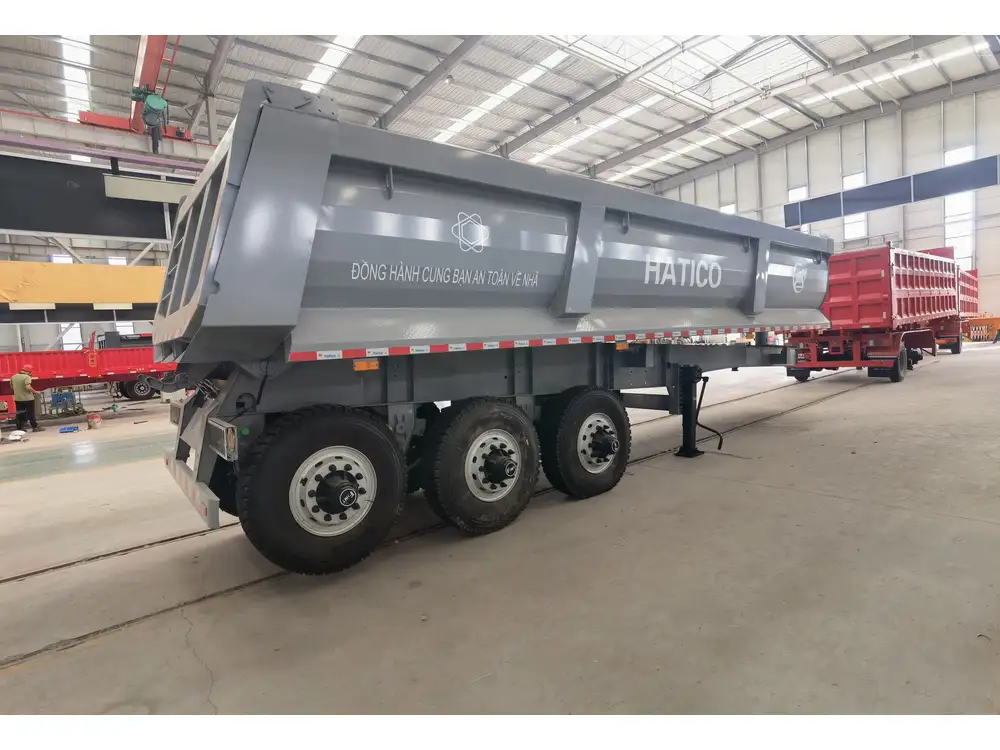The performance efficiency and integrity of semi-trailers are greatly influenced by their operating temperatures. Every transportation professional should be acutely aware of how heat impacts both the function and durability of their trailers. In this article, we delve deep into the specifics of how hot semi-trailers can get, offering insights into various factors that contribute to temperature fluctuations, potential hazards, and preventive measures.
Factors Influencing Semi-Trailer Temperatures
Time of Day and Season
- Daytime Heat Absorption: Semi-trailers can absorb significant amounts of heat during the day, especially when parked under direct sunlight. The materials used in the trailer’s construction—steel, aluminum, and composites—play a pivotal role in heat absorption.
- Seasonal Variations: The summer months can considerably elevate temperature profiles, as opposed to winter months where the temperatures may drop significantly.
Geographical Considerations
- Latitude and Climate Zones: Trailers operating in warmer climates or closer to the equator are predisposed to higher temperatures. Conversely, those in northern latitudes may experience cooler conditions.
- Urban vs. Rural Settings: Urban areas may exhibit the Urban Heat Island effect, where temperatures are significantly elevated compared to surrounding rural areas due to buildings, roads, and human activities.
Load Type and Distribution
- Material Responsiveness to Heat: Certain products, like frozen goods, can substantially affect the interior climate of a trailer that is not adequately insulated or refrigerated.
- Load Configuration: Uneven weight distribution within the trailer can lead to pressure points that may result in localized overheating, particularly in trailers designed for the transport of temperature-sensitive goods.
Trailer Insulation and Ventilation
- Quality of Insulation: A well-insulated semi-trailer will experience less heat absorption compared to a poorly insulated one. Insulation materials like fiberglass, foam, or reflective barriers can significantly reduce the internal temperatures.
- Ventilation Systems: Proper ventilation plays an essential role in controlling the heat inside the trailer, especially during hot conditions. Trailers equipped with vents or fans are better at dissipating heat buildup.
Long Haul vs. Short Haul
- Duration on the Road: Longer trips can allow heat to build up, whereas shorter trips may not allow sufficient time for temperatures to escalate noticeably.
- Frequent Stops: Trailers that frequently stop and start may face varied exposure to heat, especially if idling in direct sunlight.
How Hot Can Semi-Trailers Get?
Quantifying the potential temperatures that a semi-trailer can reach is essential for safety and operational efficiency. Let’s explore the typical temperature ranges:
| Condition | Internal Trailer Temperature | Ambient Temperature | Notes |
|---|---|---|---|
| Direct Sunlight – Summer | 120°F to 150°F (49°C to 65°C) | 90°F to 100°F (32°C to 38°C) | Can lead to spoilage or damage of cargo. |
| Direct Sunlight – Winter | 50°F to 70°F (10°C to 21°C) | 20°F to 40°F (-7°C to 4°C) | Risk of freezing if carrying temperature-sensitive goods. |
| Overloaded Trailers | 160°F+ (71°C+) | Variable | Overloading can cause friction and heat buildup in axles and brakes. |
| Poorly Insulated Trailers | 100°F+ (38°C+) | 80°F (27°C) | Inadequate insulation leads to severe heat retention. |

Potential Risks Associated with Excess Heat Inside Trailers
1. Cargo Damage
Heat accumulation can lead to a significant decline in product integrity, especially with perishable items:
- Frozen Goods: Ice and frozen food items may thaw faster than expected, leading to spoilage.
- Chemicals and Pharmaceuticals: Many chemicals require strict temperature regulations; exceeding recommended temperatures can result in breakdown or hazardous chemical reactions.
2. Structural Integrity Concerns
Prolonged exposure to high temperatures can affect the semi-trailer itself. This includes:
- Material Deformation: Metal components may warp or deform, affecting the trailer’s structural integrity.
- Insulation Breakdown: Inadequate insulation may degrade due to continuous high heat exposure, reducing effectiveness over time.

3. Brake & Axle Failures
The braking system relies heavily on temperature regulation. Overheated brakes can lead to brake fade, which compromises stopping power and may precipitate accidents.
4. Tire Blowouts
Tires can heat up significantly due to friction and external temperatures. An overheated tire is at risk of blowouts; on average, tire temperatures can soar well above the modeled temperatures of the truck cabin.
Mitigation Strategies to Regulate Heat in Semi-Trailers
Invest in High-Quality Insulation
- Utilize high-performance insulating materials to ensure minimal heat transfer, particularly on long-haul trips.
Implement Advanced Ventilation Systems
- Thermal fans and vents can regulate internal temperatures, alleviating heat accumulation.
Schedule Regular Maintenance Checks
- Regularly inspecting the braking and tire systems can identify potential overheating problems before they result in accidents.
Monitor Load Types and Distribution
- Ensure that loads are evenly distributed and suitable for transport temperature requirements, which can help manage excessive internal heating.
Utilize Temperature Monitoring Technology
- GPS-enabled temperature monitoring systems can alert drivers when a trailer’s internal temperature exceeds set thresholds, allowing for timely interventions.

Conclusion
Understanding how hot a semi-trailer can get is crucial for ensuring the safety and efficiency of every haul. With knowing the influence of various factors such as time of year, insulation quality, load type, and ventilation, manufacturers and operators can mitigate risks effectively.
By maintaining appropriate thermoregulation strategies, investing in high-quality materials, and actively monitoring internal trailer conditions, stakeholders can safeguard not just the cargo but also the integrity of the semi-trailer itself and ensure safe transport across varied terrains and climates.
In sum, addressing the complexities of temperature control is not just about operational efficiency but also about the overarching safety of the logistics process within the semi-trailer industry.



